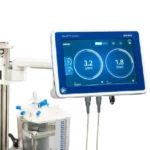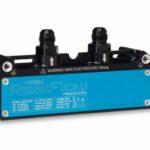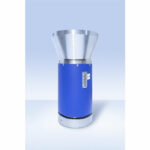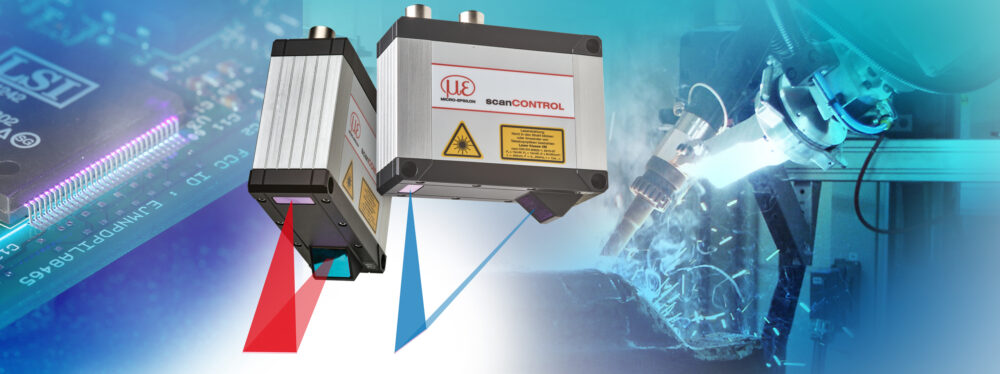
Micro-Episilon’s new scanCONTROL 30xx laser scanners have been announced. The innovative scanners offer the highest performance and are used for high speed and precise 2D/3D measurement tasks. Equipped with an internal controller, the scanners can be easily integrated in various environments.
The integration of the controller part inside the sensor housing simplifies cabling arrangements and mechanical operations. More importantly, the integration of all of the electronics inside a compact sensor body makes the installation of 2D and 3D laser scanners much easier – a critical advantage in factory automation, medical production and machine building applications where only a small installation space is provided.
How Laser Scaners Work
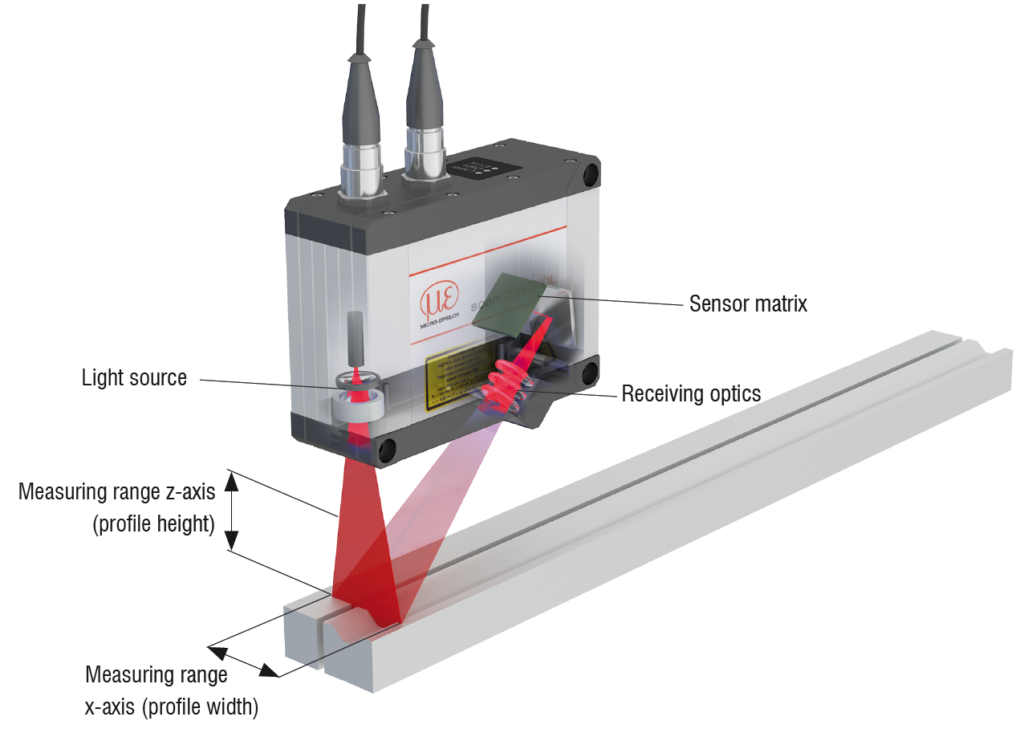
The scanCONTROL 30xx range of laser scanners from Micro-Epsilon embody the resolution, speed and dynamic range characteristics required of modern laser scanners. A compact size combined with higher resolution allows the scanCONTROL 30xx sensors to reach new performance levels in quality control.
Its high measurement precision also allows the profile sensor to measure extremely small target objects such as adhesive beading in smartphone housings. A pacemaker the size of two quarter coins is another application that requires geometrical inspection of any leakage and can benefit from a compact sensing device performing highly accurate dimensional measurements. Measuring just 96mm x 112mm x 40mm, the scanCONTROL 30xx sensors can be easily integrated into various environments.
These compact and lightweight sensors allow several interfaces to output the measured data directly, e.g. Ethernet, RS422 and MODBUS. Here, the scanCONTROL Configuration Tools software enables engineers to deliver direct measurement results without using an additional computer or controller.
The scanCONTROL 30xx sensors operate according to the international GigE Vision standard, which allows them to be integrated into industrial image processing systems. Additionally, the sensor can autonomously execute several measuring programs in parallel while delivering different measurement results per profile.
The available gateway interfaces for PROFINET, Ethernet/IP and EtherCAT further enhance the integration of laser scanners in industrial and manufacturing environments. Furthermore, for multi-scanner applications comprising an array of sensors, interface modules are also available.
In addition to the red standard laser, the scanCONTROL 3000 is available with Blue Laser Technology for measurements on demanding surfaces such as red-hot glowing metals or transparent plastics.
Why Size Matters in Laser Scanners
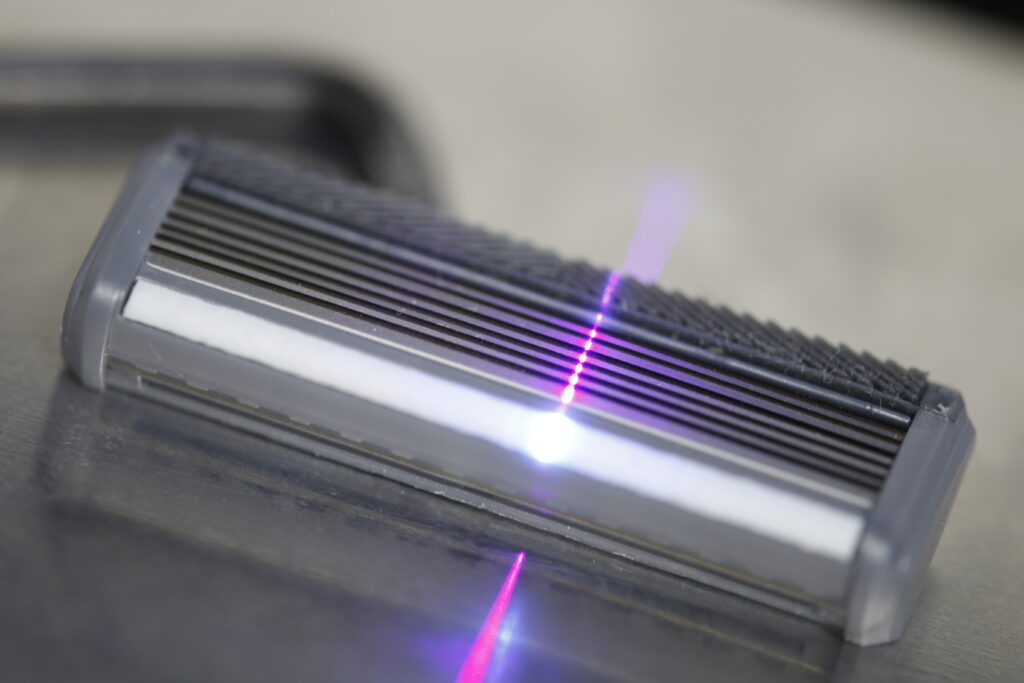
Traditional laser scanners that use external controllers carry both space and time overheads, a serious limitation when they operate on tight measuring locations. On the other hand, a compact sensor featuring integrated evaluations without an external controller or PC can be directly integrated to a PLC.
Take, for example, multi-blade razor production where all blades must be properly aligned, without any protruding. Here, measurement objects (in this case, blade points) offer a very small reference surface for angle measurements. The scanCONTROL profile sensor with a built-in controller and high point resolution in the x-axis can accurately measure the small reference surface of blade points during production control.
Likewise, medical applications such as insulin pens and pacemakers demand 100% reliable control, but their small housings make precision and detection extremely challenging for conventional measurement systems. Similar challenges occur in the production of needles, where the exact tip angle is critical.
Therefore, when laser profile scanners are tasked with measuring extremely small target objects, a high measurement resolution becomes crucial. When the measurement objects are ultra-small, such as multi-blade razors, laser sensors with integrated signal-processing capabilities bolster both accuracy and profile resolution of the measurement tasks.
Three Operating Modes
The plug-and-play solution without an external controller or PC can efficiently handle both simple and complex measurement tasks. Micro-Epsilon’s compact scanners allow engineers to choose from three predefined operating modes for their specific measurement task: high-resolution mode for maximum precision; high-speed mode for ultra-fast measurements; and high dynamic range (HDR) mode for optimal profile detection on difficult surfaces.
First of all, the high-resolution sensor matrix with 2,048 points that can achieve a point distance of 12 µm. This sets a new standard in terms of profile resolution and paves the way for more reliable detection of even the finest of details. The industries that demand the highest precision and resolution include electronics, medicine and precision mechanics. In high-speed mode, compact laser scanners can provide calibrated 2D profile data with up to 5.5 million points per second. Their profile frequency of a maximum of 10 kHz enables precise profile measurements in highly dynamic processes.
In industrial automation and robotics, for instance, the highly automated processes demand laser scanners to capture measuring points quicker than traditional scanning applications. Automated systems can employ the measurement data in a digital format made available by the compact scanners and perform the automated correction, control and quality assurance in ‘live’ processes.
Secondly, for inhomogeneous or dark surfaces, the sensors employ HDR data acquisition and an improved form of auto-exposure to optimise the measurement results. In HDR mode, the rows of the sensor matrix are exposed simultaneously without time offset, which facilitates highly reliable detection of rapidly moving objects.
Real-time surface compensation is another important feature, which allows laser sensors to measure reliably under rapidly changing conditions. The sensor rapidly adapts to the exposure time and threshold of reflection detection in real-time to ensure stable measurement results. Also, the auto-exposure feature enables engineers to individually select the areas to be exposed.

